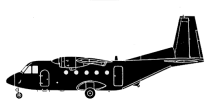Incident Overview

Description
DHL flight 7216, a Boeing 757-200 cargo plane, suffered a runway excursion at San Jos-Juan Santamaria International Airport (SJO), Costa Rica, after suffering problems with the left hydraulic system. The aircraft took off from SJO runway 07 at 15:36 UTC on a flight bound for Guatemala City. After ATC cleared the flight to FL220, the flight crew received a hydraulic system indication: “HYDRAULIC QUANTITY” followed by a second indication, this time for the left hydraulic system: “HYDRAULIC SYSTEM PRESSURE (L ONLY).” They also noticed that the left autopilot and yaw damper disengaged. From that point on, the captain took control of flying the aircraft while the first officer handled communications with ATC. They performed the relevant procedures according to the checklist and decided to return to SJO. The flight crew prepared for an ILS approach for an emergency landing on runway 07. They knew they would not have autobrake, left reverser, rudder ratio, only some spoilers, and inoperative nose wheel steering. During the approach, they extended the flaps and landing gear alternately. The captain adjusted the approach speed (Vapp) to 138-139 knots from the QRH’s recommended 137 knots, with a Vref of 130 knots. ATC cleared them to land at 16:22 UTC with a reported wind from 240 degrees at 10 knots. On short final approach, the captain disconnected the autopilot and continued visually, executing a normal touchdown in the touchdown zone at 16:24 UTC. The landing was initially controlled by the flight crew, maintaining proper directional control with the rudder, differential brakes, right thrust reverser, and manual speed brake. However, at around 16:25 and nearing taxiway D, the aircraft began to turn right uncontrollably, resulting in an excursion off the runway at taxiway K to the south of the active runway. There was no fire and the aircraft auffered major damage, as a result of the impact against the fence of an airport road and the rainwater collection slope. Contributing factors: 1. Fatigue and stress on the individual cables in the cross-section of the flexible hydraulic retraction hose of the L/H MLG down-locking actuator. 2. The probable inadvertent synchronised movement of the right Reverse Thrust Lever and left Engine Control Thrust Lever, as a reaction to muscle memory.
Source of Information
https://crprensa.com/avion-se-accidenta-en-aeropuerto-juan-santa-maria-costa-rica/, https://www.nacion.com/sucesos/accidentes/avion-de-carga-se-accidenta-en-aeropuerto-juan/DPBKCWESEZEHBI2D7TIXMDKJLM/story/https://crprensa.com/avion-se-accidenta-en-aeropuerto-juan-santa-maria-costa-rica/, https://www.nacion.com/sucesos/accidentes/avion-de-carga-se-accidenta-en-aeropuerto-juan/DPBKCWESEZEHBI2D7TIXMDKJLM/story/Primary Cause
Fatigue and stress on the flexible hydraulic retraction hose of the L/H MLG down-locking actuator, potentially exacerbated by the probable inadvertent synchronised movement of the right Reverse Thrust Lever and left Engine Control Thrust Lever, resulting in a loss of control.Fatigue and stress on the flexible hydraulic retraction hose of the L/H MLG down-locking actuator, potentially exacerbated by the probable inadvertent synchronised movement of the right Reverse Thrust Lever and left Engine Control Thrust Lever, resulting in a loss of control.Share on:




